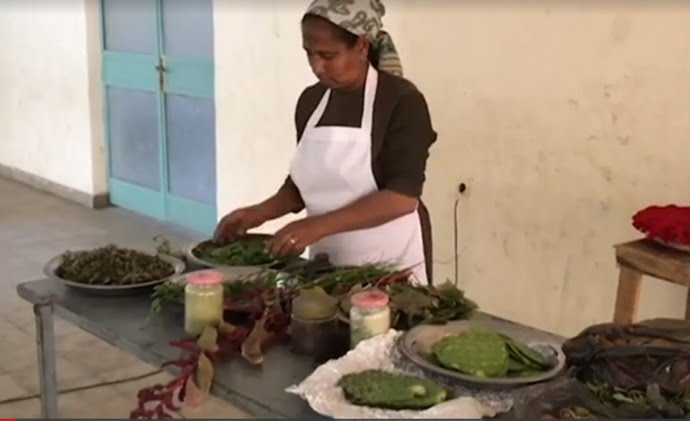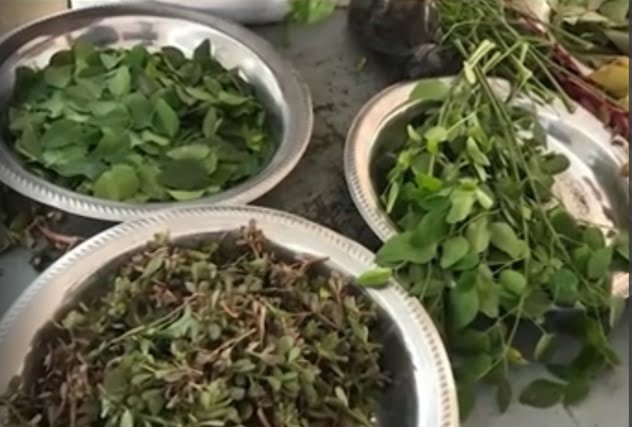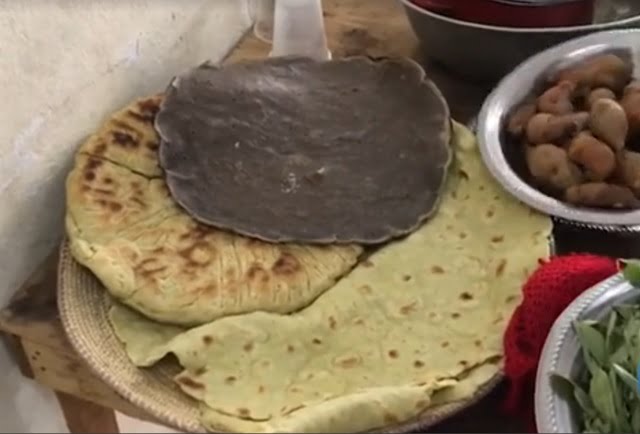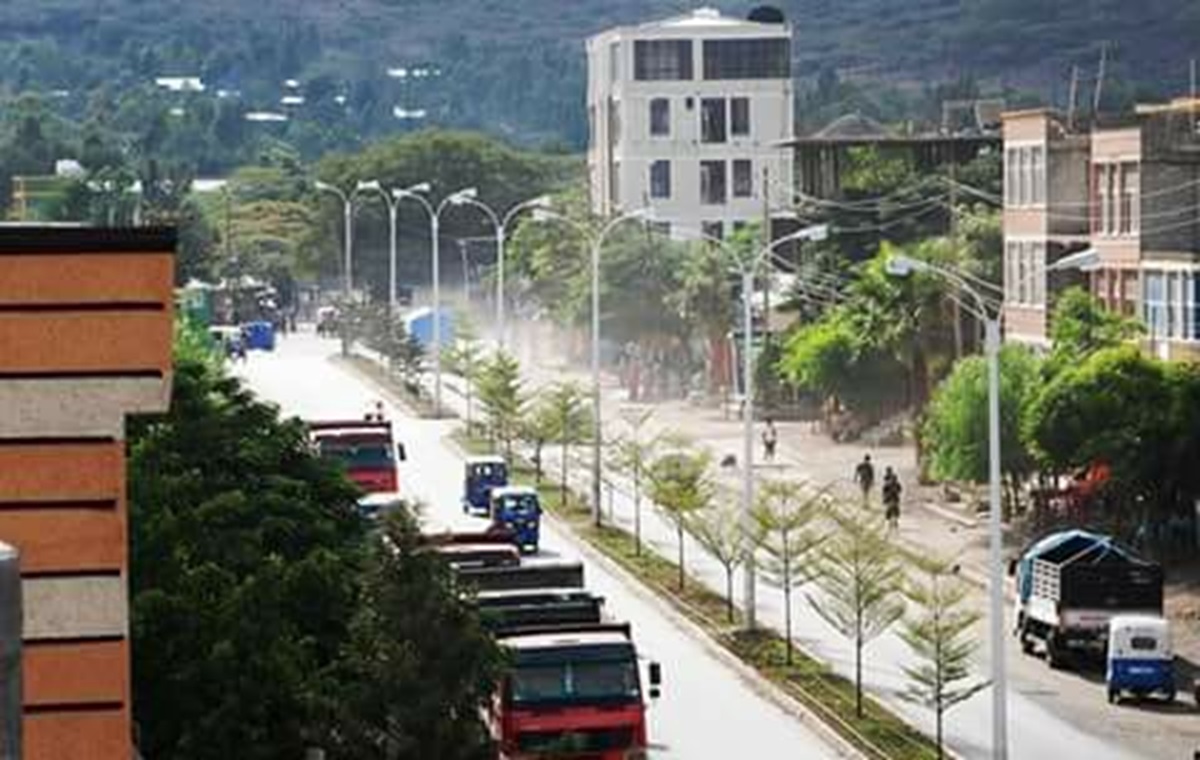Analysis: How Tigrayan food experts introduce common plants as food to prevent death by starvation
By Medihane Ekubamichael @Medihane

Addis Abeba – Faced with the worst food crisis that many fear has already turning into famine, Tigrayan food experts are adopting creative ways of using common plants, including cactus leaf, and cactus pear, locally known as Beles, and other plants that were previously neglected or were considered as weeds, to provide nutritious food and mitigate the impact of death by starvation.
A video report by the VOA Amharic showed how Tsega Gebrekidan, a resident in Mekelle, the capital of Tigray state, uses these plants to prepare food at Mekele Garden Refugee Center.
Training is also being provided by Tigrayan food experts at Midregenet IDP center in Mekelle city on how to prepare Beles and other plants, for long neglected and considered as weeds, to help alleviate the impact of starvation due to severe food shortage that struck war-torn Tigray.
This comes in the backdrop of growing alarm at the impact of what the UN called a “de facto blockade” that hampered humanitarian supplies to Tigray. “Famine deaths were mounting,” warned a statement by Refugees International released in early January that revealed a minimum of 425 hunger-related deaths per day, and a “conservative maximum” of 1,201 deaths per day in Tigray.
“Now we are prevented from getting either food or medicine as we are blockaded in all sides,” Tsega Gebrekidan, said, adding that the only option was to save lives by preparing food using different plants that grow in the localities.
Tsega, along with her colleagues, teaches IDPs in the center on how to use and prepare various foods from different plants which were not commonly used by the local community. In addition to alleviating starvation due to lack of food, Tsega and her colleagues are discovering that in Tigray there are a variety of herbs that are widely used as regular food in other countries.
“…now we use them to protect our people from starvation and disease and devised a method on how people can use what they find in their environment to save their lives.”
Tsega
“For example, Beles plant, with is also known as cactus pear plant is a staple food in Mexico. The Amaranths and Moringa are also common in other countries, but we still did not use them effectively because we do not know which plants are edible plants in our area,” said Tsega. “But now we use them to protect our people from starvation and disease and devised a method on how people can use what they find in their environment to save their lives.”
Tsega also elaborated that they are teaching the community how to prepare and use these foods, even for the future as the plants contain a variety of ingredients that can replace expensive foods.

According to her, these plants are readily available and can be easily processed and used for food in various ways. “Half mix of other cereals with Beles, bread can be prepared. You can also make something like fried red stew and juice; Tea is prepared from Moringa flour and leaves; stew, salads and other dishes can also be made from it; Amaranths can be used to make things like fries and pan cakes; Purslane can be prepared as fries or we can juice. In addition to the root, the leaves of sweet potato can be roasted and eaten.”
Previously, Tsega Gebrekidan is known for her creative work producing marmalade from Beles and preparing variety of other foods including Beles juice. Before war disrupted her work, she was exporting her organic marmalade jam to countries in Europe. Through the market ties facilitated by the FAO and the Federal Ministry of Agriculture, she was able to export about 4,000 cans of organic marmalade jam to the European markets.
“…we show how to prepare them for diet first. Next, we will show how to plant them in their backyard or how to use them from their natural environment”
Meriteit
Meriteit Hadush, another food expert who is educating ordinary people on how to use these plants, on her part explained that it was important to use these herbs to prevent the current starvation in Tigray. “We started using these [plants] now because of the lack of food, but they are so good that we need to use them for food in the future too,” she said. “Although the plants grow naturally, they are good for human nutrition, so we show how to prepare them for diet first. Next, we will show how to plant them in their backyard or how to use them from their natural environment.” said Meriteit.
Ameha Kahsay is an Assistant Professor of Nutrition Education at Mekelle University and he agrees with what Tsega and Meriteit are doing. “These plants should be used not only to overcome the current situation but also should be used for the future as food source,” he said. “These plants have been studied in different countries and regions. They are harmless, they are good for our body and mind, as they are highly nutritious, containing vitamins, protein and minerals. They look strange because we focused on other conventional foods at the better times and we neglected and forgot about these plants.” he explained, adding that they will also promote the use of these plants that are traditionally considered as weeds to be used in the community as food.

Background
In April last year the humanitarian crisis in Tigray begun escalating along with access and logistic difficulties compounded by the civil war. Abadi Girmay (PhD), then Tigray interim administration official, expressed his concern that Tigray would experience “unprecedented danger” in the next three to four years if the agricultural sector did not not recover.
The severe food shortage is also exacerbated by subsequent surge in IDPs mostly from from Western Tigray. On 02 December 2021, the United Nations Office for the Coordination of Humanitarian Affairs (OCHA) reported that already 1.2 million people have been displaced from Western Tigray since the beginning of the war
By mid-January this year, humanitarian organizations like the UNOCHA and WFP declared that all-time low food distribution in Tigray as fuel and stocks of nutritionally fortified food for the treatment of malnourished children and women were almost or entirely exhausted and warned dire hunger where they had to choose who goes hungry to prevent another from starving.
A new food security assessment, released on 28 January by the United Nations World Food Program (WFP), showed that almost 40 percent of Tigrayans were suffering an extreme lack of food, after 15 months of conflict. Meanwhile, across all three conflict-affected regions of the north, more than 9 million people were in need of humanitarian food assistance, the highest number yet.
Tigray’s Emergency Food Security Assessment also revealed that 83 percent of people in the region were food insecure; families were exhausting all means to feed themselves, and three-quarters of the population were already using extreme coping strategies to survive. AS







